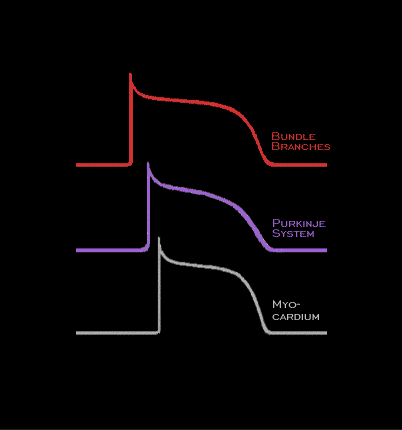
An understanding of the intrinsic differences in the duration of the action potential in varying portions of the conducting system is important because it explains why the slow conduction resulting in aberrancy occurs in only a portion of the conducting system such as the right bundle or a fascicle of the left bundle. The action potentials with the longest durations occur in the right bundle and along the anterior and posterior borders of the left bundle. They then shorten progressively as they approach the ventricular myocardium. Thus, the region with the longest action potential duration will be incompletely recovered and conduct slowly at a time when other regions have recovered completely and conduct normally.
